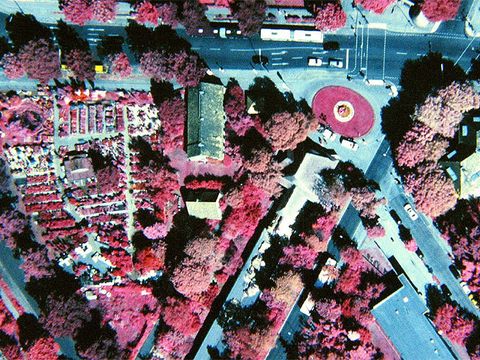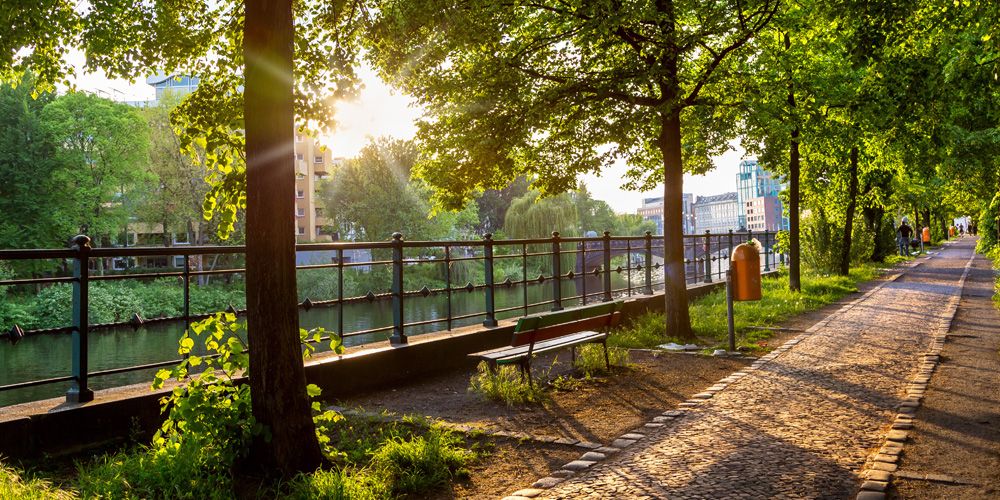On average, one street tree supplies ten people per day with oxygen. That means: ten times more air to breath. At the same time, they reduce the greenhouse gas effect and clean the air by filtering out dust and pollutants.
Trees produce oxygen
Regardless of whether beech, oak or larch: Trees process toxic carbon dioxide through their foliage or needles and, with the help of solar energy, produce oxygen that is vital for us. How much O2 a tree can produce per day depends on its size and its number of leaves. And the number of daylight hours of course. A full-grown beech tree, around 80 to 100 years old, for example, produces roughly 13 to 15 kilograms of oxygen in one day. This is equal to the daily requirement of at least ten people.
Trees filter our air
Yet trees can do much more: They filter dust and other harmful particles from the air and keep the air clean.




